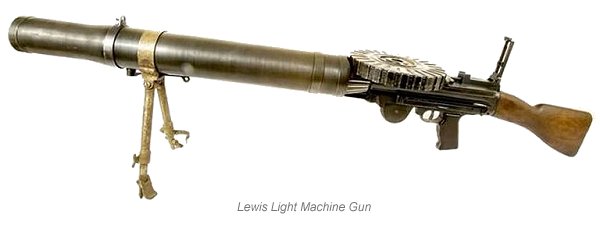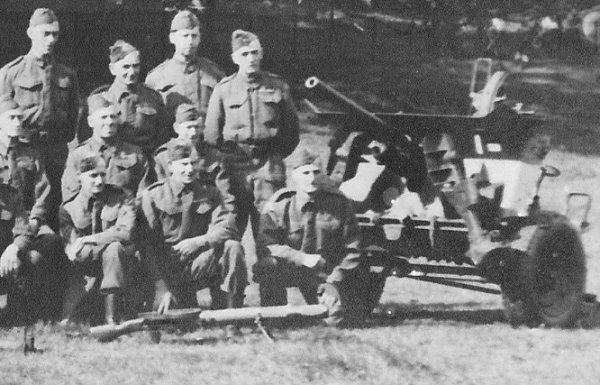yeovil at waR
lewis light machine gun
Weapons of the Home Guard
The Lewis light machine gun was developed by American Colonel Isaac Lewis, based on original designs by an American inventor called Samuel McClean. The gun was manufactured at Liège, Belgium and adopted by the Belgian army in 1913. In 1914 production began in England and America and the gun was adopted by the British Army in 1915 as a lighter and more portable alternative to the Vickers. It was also easier and cheaper to manufacture. It remained in service in Britain until replaced by the Bren gun in 1939.
Ammunition was
.303" and held
in a 47-round or
97-round radial
drum and the
gas-operated
gun, firing from
an open breech,
was air cooled
and employed
longitudinal
aluminium vanes
along the barrel
which, in
theory, cold air
was drawn along
from the breech
end. The barrel
was cased in a
protective steel
cylinder. The
gun went through
several
modifications
and marks.
Due to a severe
shortage of Bren
guns following
the evacuation
of the British
Expeditionary
Force from
France, the Mark
IV, a modified
Mark III
aircraft
pattern, was
issued in
quantity to the
Home Guard in
1940 for use in
the ground role.
The Lewis gun
was declared
obsolete in
August 1946.
The Lewis gun weighed 28 pounds (13kg) and was 50½" (1.28m) long with a 26½" (670mm) barrel. It had a rate of fire of 500 to 600 rounds per minute and a muzzle velocity of 2,440 feet per second (740m/s) giving it an effective range of 880 yards (800m) and a maximum range of 3,500 yards (3,200m). It was issued with either a bipod or a field mount.
Adapted from my e-book "A Photographic Guide to the Taunton Stop Line"
gallery


Courtesy of Rob
Baker
This photograph of the Yeovil Home Guard shows two Home Guard weapons, a Lewis Gun in the foreground and a 2-pounder Anti-Tank Gun.